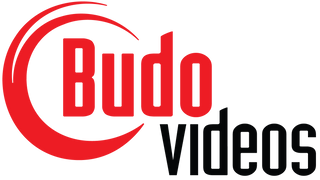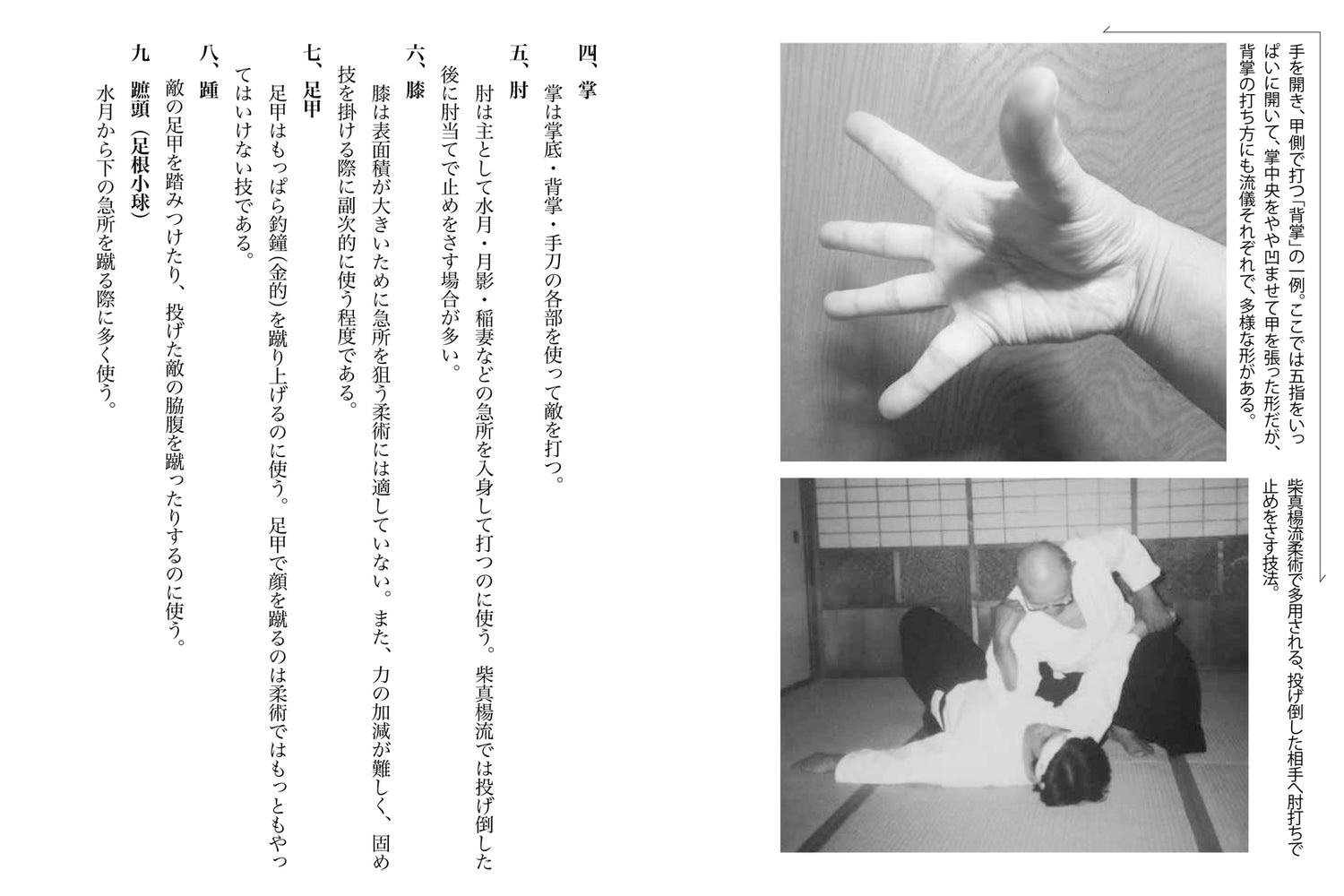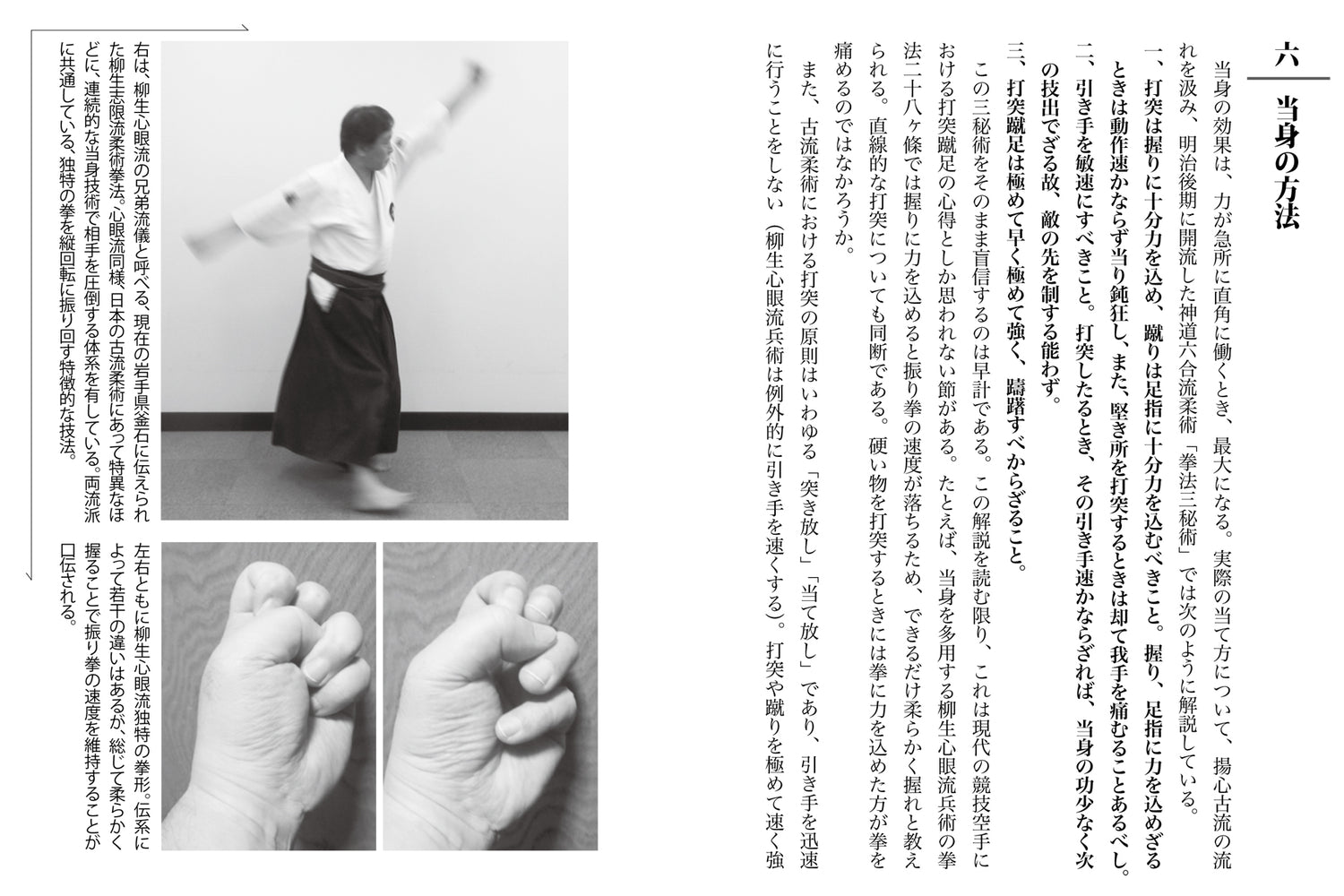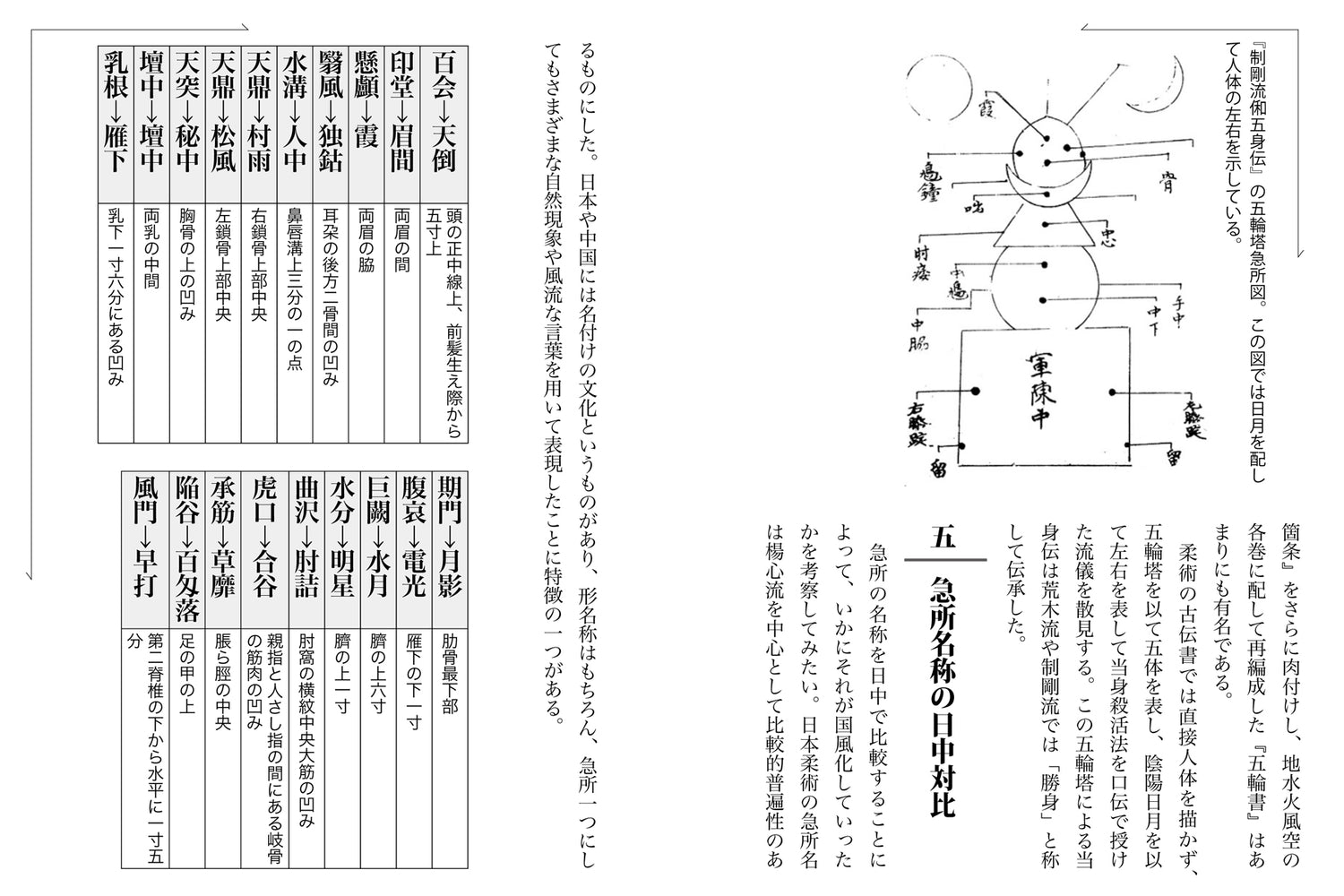The Secrets of Striking to Kill or Revive Book by Jun Osano
A trove of secret historical documents!
Killing and reviving—this is the ancient art of atemi.
This book compiles rare scrolls and obscure techniques seldom revealed in magazines or books until now. Step into the profound world of atemi, far beyond the mere "striking arts" of today’s imagination.
Killing techniques: Methods that paralyze the central nervous system or temporarily disable motor functions through precise, forceful strikes to vital points scattered across the body’s surface, inducing a state akin to death.
Reviving techniques: Restorative methods applied to those whose bodies have been altered or injured by attacks.
Contents:
Chapter 1: Foundations of Atemi Killing and Reviving Techniques
- Definition of atemi killing and reviving methods
- Differences from karate and kenpo
- Atemi as a secret esoteric tradition
- Timing for applying atemi
- Body parts used in atemi
- Methods of atemi
- Effects of atemi
Chapter 2: Chinese Medical Theory and the Origins of Atemi
- Three theories of Chinese medicine
- Vital points and meridians
- Early atemi in traditional jujutsu
- Arrival of Chinese medical texts
- Chinese kenpo theory
- Japanese-transmitted Rakan Ken
Chapter 3: Japanization of Atemi Techniques
- Meridian theory and atemi
- Evolution of vital point diagrams
- Five Elements philosophy
- Five-ring pagoda concept
- Comparison of vital point names in Japan and China
- Takeuchi-ryu’s seventy-two killing points
- Rituals of atemi transmission
Chapter 4: Atemi Techniques (Unarmed)
- Atemi to the head (face)
- Main vital points of the head
- Power of atemi
- Atemi to the front torso
- Atemi to the back torso
- Atemi to the limbs
- Atemi to the “bell” point
Chapter 5: Atemi Techniques (Weapons)
- Atemi with a staff (six-foot pole)
- Atemi with a sword
- Atemi with a half-staff (three-foot pole)
- Atemi with a short stick
- Iron fan
- Hand-held rod
- Iron chain
- Arrowhead wood
Chapter 6: Yagyu Shingan-ryu Heijutsu and Atemi
- Twenty-one articles
- Kenpo master Hoshi Sadayoshi
- Kato Zenbei and Kato Gonzo
- Satake Yuzaburo and Satake Morinotsume
- Mystery of hidden master names
- Twenty-one heijutsu articles
- Solo training
- Comparison with Chinese kenpo
- Methods of striking with the fist
- Secret technique “Eagle Claw”
Chapter 7: Yoshin-ryu Jujutsu and Atemi
- Brief history of Yoshin-ryu
- Contents of Yoshin-ryu
- Vital points transmitted in Yoshin-ryu
- Practical atemi
- Torso release techniques
Chapter 8: Tenjin Shinyo-ryu Jujutsu and Atemi
- Formation and development of Tenjin Shinyo-ryu
- Legend of the founder’s atemi enlightenment
- Contents of Tenjin Shinyo-ryu
- Five organs and six viscera theory
- Atemi theory in Tenjin Shinyo-ryu
- Tenjin Shinyo-ryu jujutsu forms
- Bone-setting techniques
Chapter 9: Shiba Shinyo-ryu’s Pinnacle of Atemi Killing Techniques
- Formation and development of Shiba Shinyo-ryu
- Brief biographies of Shiba Shinyo-ryu masters
- Contents of Shiba Shinyo-ryu jujutsu
- Atemi in Shiba Shinyo-ryu
- Reviving techniques in Shiba Shinyo-ryu
Chapter 10: Sekiguchi-ryu Jujutsu’s Atemi Techniques
- Formation and development of Sekiguchi-ryu
- Characteristics of Sekiguchi-ryu
- Vital points taught in Sekiguchi-ryu
- Sekiguchi Shinshin-ryu killing and reviving catalog
- Sekiguchi-ryu reviving techniques
6.誘 (Yū) reviving techniques - Forms
Chapter 11: Other Traditional Jujutsu Schools and Atemi (Part 1)
- Takeuchi-ryu Hoshu Koshinomawari
- Seigo-ryu
- Fusen-ryu Jujutsu
- Jujutsu Shibukawa Ichiryu
- Namba Ippo-ryu Kumiauchi
- Shinmyo-ryu Jujutsu
- Shishin-ryu Hoshu
- Kanshin-ryu Kenpo
- Sendai-han Asayama Ichiden-ryu Jujutsu
Chapter 12: Other Traditional Jujutsu Schools and Atemi (Part 2)
- Jikishin-ryu Jujutsu
- Tsukahara Bokuden-ryu
- Shingoku-ryu
- Kiraku-ryu
- Katayama Ichiryu
- Asayama Ichiden-ryu Jujutsu Reviving Techniques
- Muso-ryu Shin Jujutsu
Chapter 13: Historical Documents
- Late Edo-period town doctor Hirano Shigeaki’s “Gunjin Biyo Kyukyu Tekkata”
- Yoshin-ryu killing and reviving illustrated catalog
- Shibukawa Ichiryu secret techniques
- Muso-ryu reviving techniques transmission
- Kaishin-ryu life-and-death techniques
- Unidentified school’s atemi vital point diagram
- From Tenjin Shinyo-ryu to judo and karate
- Choking and kicking techniques
About the Author: Jun Osano
Born in Fujiyoshida City, Yamanashi Prefecture. Studied Chinese martial arts and traditional jujutsu at the Chigasaki branch of the All-Japan Chinese Kenpo Federation during student years. Founded Suigetsu-juku, a martial arts instruction institute, in 1982. While teaching at Suigetsu-juku, trained in martial arts preserved in former feudal domains. Served as an instructor, councilor, examiner, and public relations director for the International Budo Institute. Received the Budo Merit Award in 1992. Established the International Suigetsu-juku Martial Arts Association in 2002, serving as president and chief instructor. Honorary advisor to the Golden Eagle Fist Association in Changhua County, Taiwan. Vice-chairman of the Matsushiro-han Bumbu Gakko Budo Association. Author of numerous books and papers.
Language: Japanese
Length: 300 pages
mbosn1
受け取り可能状況を読み込めませんでした





